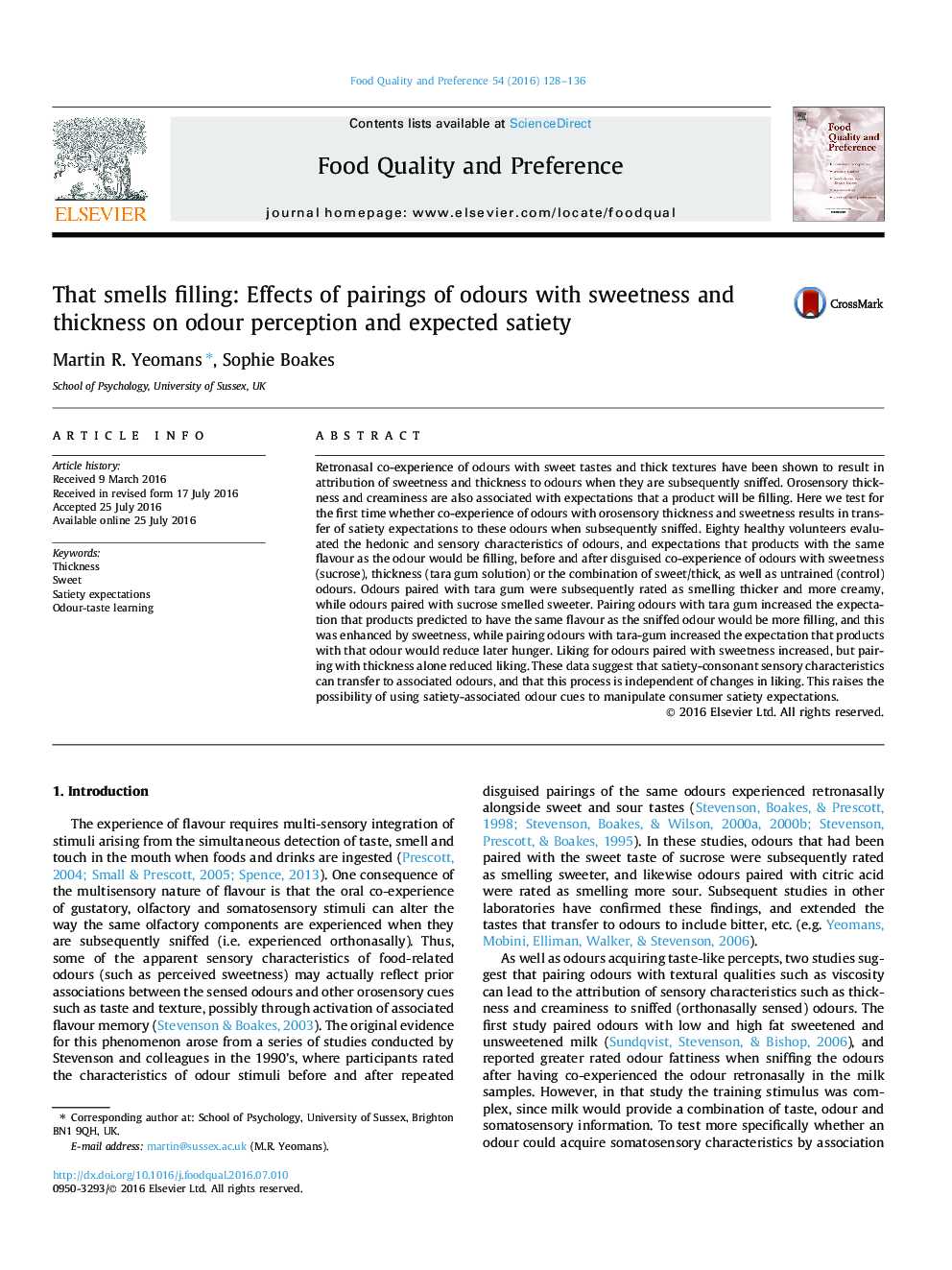| Article ID | Journal | Published Year | Pages | File Type |
|---|---|---|---|---|
| 6261154 | Food Quality and Preference | 2016 | 9 Pages |
â¢Separate prediction-based and evaluative learning processes underlie associations between odours and orosensory experience.â¢Pairing odours with orosensory thickness makes odours smell thick and creamy.â¢Odours paired with orosensory thickness are expected to be more filling if ingested.â¢Odours paired with sweetness alone become sweeter but are not expected to be more filling.
Retronasal co-experience of odours with sweet tastes and thick textures have been shown to result in attribution of sweetness and thickness to odours when they are subsequently sniffed. Orosensory thickness and creaminess are also associated with expectations that a product will be filling. Here we test for the first time whether co-experience of odours with orosensory thickness and sweetness results in transfer of satiety expectations to these odours when subsequently sniffed. Eighty healthy volunteers evaluated the hedonic and sensory characteristics of odours, and expectations that products with the same flavour as the odour would be filling, before and after disguised co-experience of odours with sweetness (sucrose), thickness (tara gum solution) or the combination of sweet/thick, as well as untrained (control) odours. Odours paired with tara gum were subsequently rated as smelling thicker and more creamy, while odours paired with sucrose smelled sweeter. Pairing odours with tara gum increased the expectation that products predicted to have the same flavour as the sniffed odour would be more filling, and this was enhanced by sweetness, while pairing odours with tara-gum increased the expectation that products with that odour would reduce later hunger. Liking for odours paired with sweetness increased, but pairing with thickness alone reduced liking. These data suggest that satiety-consonant sensory characteristics can transfer to associated odours, and that this process is independent of changes in liking. This raises the possibility of using satiety-associated odour cues to manipulate consumer satiety expectations.
